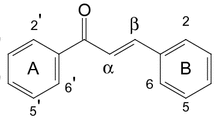Abstract
Bioassay-guided fractionation ofCrataegus pinnatifida (Rosaceae) gave two cytotoxic ursane-type triterpenes which were identified as uvaol (1) and ursolic acid (2) by physicochemical and spectroscopic methods. 3-Oxo-ursolic acid (3) was synthesized from ursolic acid (2) by Jones method. The cytotoxic activities of these compounds were tested against murine L1210 and human cancer cell lines (A549, SK-OV-3, SK-MEL-2, XF498, and HCT15)in vitro. Compounds1 and2 showed moderate cytotoxicities against L1210, whereas they showed weak activities against human cancer cell lines. However, compound3 exhibited potent cytotoxic activities both in murine and in human cancer cell lines.
Similar content being viewed by others
References
Ahn, K. S., Hahm, M. S., Park, E. J., Lee, H. K. and Kim, I. H., Corosolic acid, isolated from the fruit ofCrataegus pinnatifida var.psilosa is a protein kinase C inhibitors as well as a cytotoxic agent.Planta Med., 64, 468–470 (1998).
Fieser, L. F. and Fieser, M., Reagent for organic synthesis, John Wiley and Sons, INC., Vol. 1, p. 142 (1967).
Jeong, T. S., Hwang, E. I., Lee, H. B., Lee, E. S., Kim, Y. K., Min, B. S., Bae, K. H., Bok, S. H. and Kim, S. U., Chitin synthase II inhibitory activity of ursolic acid, isolated fromCrataegus pinnatifida, Planta Med., 65, 261–263 (1999).
Kashiwada, Y., Wang, H. K., Nagao, T., Kitanaka, S., Yasuda, I., Fyjioka, T., Yamagishi, T., Cosentino, L. M., Kozuka, M., Okabe, H., Ikeshiro, Y., Hu, C. Q., Yeh, E. and Lee, K. H., Anti-HIV Activity of oleanolic acid, pomolic acid, and structurally related triterpenoids.J. Nat. Prod., 61, 1090–1095 (1998).
Kim, J. S. and Kim, I. H., Pharmaco-constituents ofCrataegus pinnatifida var.pubescens leaves.Yakhak Hoeji, 37, 193–197 (1993).
Kwon, B. M., Lee, S. H., Choi, S. U., Park, S. H., Lee, C. O., Cho, Y. K., Sing, N. D., and Bok, S. H., Synthesis and in vitro cytotoxicity of cinnamaldehydes to human solid tumor cells. Arch. Pharm. Res., 21, 147–152 (1998).
Kwon, H. C., Lee, K. R. and Zee, O. P., Cytotoxic constituents ofPilea mongolica.Arch. Pharm. Res., 20, 180–183 (1997).
Min, B. S., Jung, H. J., Lee, J. S., Kim, Y. H., Bok, S. H., Ma, C. M., Nakamura, N., Hattori, M. and Bae, K. H., Inhibitory effect of triterpenes fromCrataegus innatifida on HIV-1 Protease.Planta Med., 65, 374–375 (1999).
Nakanishi, K., Goto, T., Ito, S., Natori, S., Nozoe, S.,Natural Products Chemistry Vol. 3, Kodansa, Tokyo, (1983).
Oh, I. S. and Kim, I. H., Pharmaco-constituents ofCraetagus pinnatifida var.psilosa leaves (I).Yakhak Heoji, 37, 476–482 (1993).
Oh, I. S., Whang, W. K. and Kim, I. H., Constituents ofCrataegus pinnatifida var.psilosa leaves (II).Arch. Pharm. Res., 17, 314–317 (1994).
Park, S. W., Yook, C. S. and Lee, H. K., Chemical components from the fruits ofCrataeguss pinnatifida var.psilosa.Kor. J. Pharmacog. 25, 328–335 (1994).
Perry, L. M.,Medicinal Plants of East & Southeast Asia: Attributed Properties and Uses. The MIT Press, Massachusetts, pp 342 (1980).
Skehan, P., Storeng, R., Schudiero, D. A., Monks, A., McMahan, J., Vistica, D., Warren, J. T., Bokesch, H., Kenny, S. and Boyd, M. R., New colorimetric cytotoxicity assay for anticancer drug screening.J. Natl. Cancer Inst., 82, 1107–1112 (1990).
Sohn, K. H., Lee, H. Y., Chung, H. Y., Young, H. S., Yi, S. Y. and Kim, K. W., Anti-angiogenic activity of triterpene acids.Cancer Letters, 94, 213–218 (1995).
Tommasi, N. D., Simone, F. D., Pizza, C., Mahmood, N., Moore, P. S., Conti, C., Orsi, N. and Srein, M. L., Constituents ofEriobotrya japonica. A study of their antiviral properties.J. Nat. Prod., 55, 1067–1073 (1992).
Trumbull, E. R., Bianchi, E., Eckert, D. J., Wiedhopf, R. M. and Cole, J. R., Tumor inhibitory agents fromVauquelinia corymbosa.J. Pharm. Sci., 65, 1407–1408 (1976).
Author information
Authors and Affiliations
Corresponding author
Rights and permissions
About this article
Cite this article
Min, B.S., Kim, Y.H., Lee, S.M. et al. Cytotoxic triterpenes fromCrataegus pinnatifida . Arch Pharm Res 23, 155–158 (2000). https://doi.org/10.1007/BF02975505
Received:
Issue Date:
DOI: https://doi.org/10.1007/BF02975505




